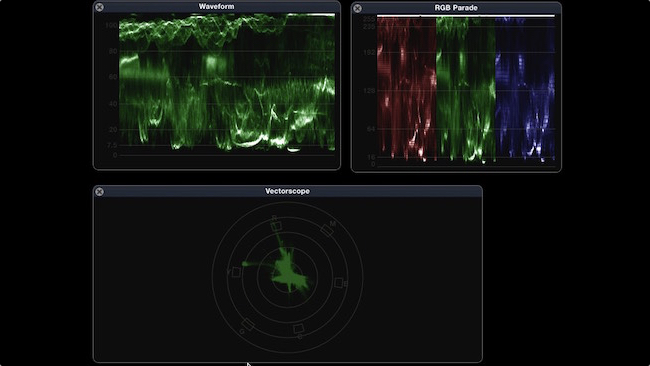
 $99 gets you some very accurate scopes.
$99 gets you some very accurate scopes.
ScopeBox from Divergent Media has matured over the years into not just a software scope solution but also a capturing tool. Ned Soltz takes a look.
ScopeBox’ most recent version incorporates a feature that Divergent calls ScopeLink, the ability to accept input from EditReady, Final Cut Pro X, Pomfort Silverstack, Adobe PremierePro, Adobe After Effects, Adobe Speedgrade and Adobe Prelude. Avid and Resolve are not supported.
The overarching question here is why would anyone want to pay $99 for a scope application when your NLE already includes scopes? First of all, Divergent claims a high degree of accuracy with its scopes. ScopeBox also includes several scopes not generally available within NLE scopes including RGB histogram and channel plot. Furthermore, ScopeBox will reflect every pixel within the image which may not be the case within the built in NLE’s scopes.
Each of the various scopes has adjustments relevant to what the scope is measuring. For example, the Vectorscope can be toggled to show flesh line and tangents, zoom scale, auto or manually-set colorspace and zoom. All of the scopes have various intensity and scale options.
ScopeBox accepts input from a capture card or direct from application via ScopeLink.
In earlier versions when it only accepted external input through a capture card, I used it on several shoots as on-set scopes, taking SDI output from the camera into a Thunderbolt Blackmagic device and displaying both a preview image as well as whichever of the scopes I needed. The program always accepted, and still does, any readable clip residing on the system.
Using ScopeLink, clips ingested in EditReady, which we’ve previously reviewed, can simultaneously be viewed in ScopeBox. This provides an opportunity to examine a clip in more detail or even when applying a LUT via EditReady to see the scopes’ representation of the LUT’s effect.
To send footage from your NLE to ScopeBox via ScopeLink, you must select ScopeLink as the video destination in your NLE’s preferences. In Final Cut Pro X, for example, it is somewhat annoying that FCP X always seems to default to ScopeLink as its default AV output. In order for me to view my footage on my reference monitor through my Blackmagic card, I need to reset that preference every setting. While a very small issue and hardly worth a worry, nonetheless users should be aware if after installing ScopeBox output via the capture card disappears. Either launch ScopeBox and view the Scopes or select the capture card as your output. Of course, it is always possible to toggle between the outputs.
Another little annoyance is that the source footage does not actually begin to display within ScopeBox until it is actually playing within the source application. Furthermore, in order for the Preview window to display as well as for the scopes to register, it is necessary to do a Control-Click within each respective window to select the Source, which in the case of the example below is Final Cut Pro X.
A final feature is the ability to record any input coming into ScopeBox at whatever resolution the footage might be. To record footage, set recording parameters in the preferences and simply hit the red record button in the source window. And you even capture stills by clicking the camera icon in the source window.!
ScopeBox is well worth the $99 simply for the accuracy of the scopes, the ability to apply LUTs, record and just otherwise have a much more accurate representation of your footage than the built-in scopes of your NLE provide.
Tags: Production


Comments